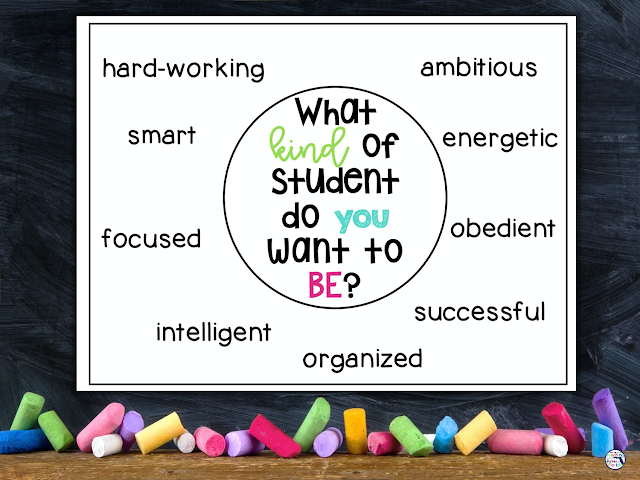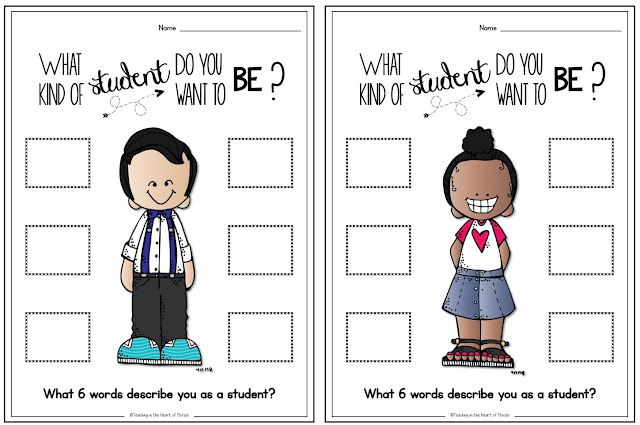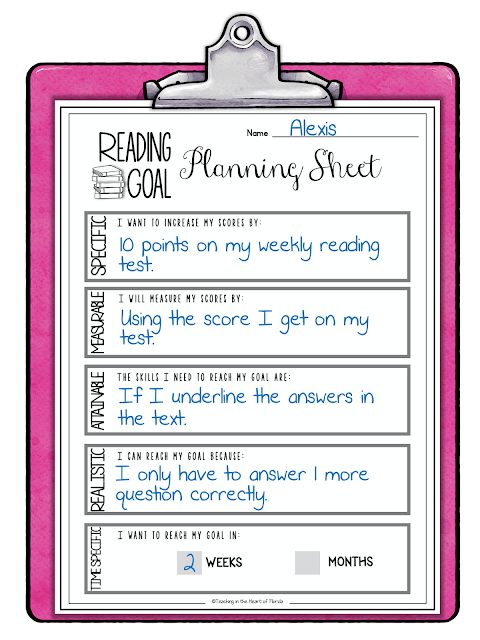Adults know that setting goals are important, but how can you teach your students to set SMART goals that make an impact on their learning? Elementary age students generally haven't developed an understanding of how to set goals or even that goals are a "thing".
As a teacher, teaching students how to set goals can seem daunting - especially for young learners - 2nd and 3rd grade in particular. But it CAN BE DONE - and I'm going to help you do it! #keepreading
Young students are motivated to perform well in school based on how much they want to please parents or their teachers. Their desire to get an A on a test, or read fluently is solely based on what the adult's reaction to it will be.
What if our students were motivated by their own desire to learn and perform well on various measures of learning? What if we can help our students learn to take responsibility for their learning? Wouldn't that make a huge impact on their learning?
Before we can set goals with students, we have to lay the groundwork for why goal setting is a worthwhile activity for them to do.
What Kind of Student Do You Want to Be?
If you ask an elementary-age child what kind of student they want to be - you might be surprised by their answer! Responses to this question range from "blank stare" to "I want to be smart like (fill in the blank)". They-don't-know.
That's why I start there.
As a class, we will brainstorm adjectives to describe the type of student we want to be:
I like to create a big anchor chart that students can continuously refer to as they learn about goals and being a good student. Of course, this is a lesson in itself. Getting students to come up with words to describe a good student other than "smart" isn't that easy. Be prepared with a list you can "suggest" to your class.
After this whole group brainstorming, I want my students to reflect and visualize what they want for themselves. I give them this worksheet to create their own profile:
There are 8 different versions, so each child can find one
that looks like them! Also available in black and white,
so they can color the pictures of themselves.
Effective Goals are SMART
You might have heard about SMART goals in various contexts, but do you know what the acronym means? Before you can successfully help students set goals, there needs to be a structure for it. Otherwise, frustration may be the outcome.
SMART stands for:
S - Specific
M - Measurable
A - Attainable
R - Realistic
T - Time Specific
S - Specific
Goals have to be very specific, especially for children.
"I want to increase my reading score by 5 points."
"I want to be able to read 80 words per minute."
M - Measurable
Goals must be able to be measured. The goals I listed above can be measured. Here's a few non-examples:
"I want to be a better reader."
"I want to be good at math."
These goals are typical of children. They know they want to be "better" at something, but this cannot be measured.
In the example below, this goal is specific - increase my score by 10 points; and measurable - can be measured by the score received on a reading test.
This is a great example of a beginning goal for a reader. Alexis is striving to improve her weekly reading score by 10 points.
She is going to make sure to underline the answers in
the text. Her goal is for 2 weeks.
A - Attainable
A student who consistently scores a 70% on a reading comprehension test shouldn't set a goal of attaining 100%. Going from 70% to 100% is a pretty BIG goal and isn't really attainable. The goal of improving their score to a 75 or 80% is attainable.
Students need small attainable steps when they begin goal setting - otherwise, they will experience failure over and over. This defeats the purpose of goals.
This is why teachers must be part of the goal-setting process with their students.
R - Realistic
A SMART goal is realistic if you can plan the steps it will take to reach the goal.
For example, if a student wants to set a goal of reading 80 words per minute and they are currently at 70 words per minute - what steps would you suggest they take to reach that goal?
I might suggest that the student read aloud to their parent every night for 15 - 30 minutes. Or, give them a new word decoding strategy to practice with other than sounding out the words.
This step is important. They need a strategy to help them reach their goal. In the Alexis example, the strategy is to underline the answers in the text. This gives Alexis a realistic way of achieving her goal.
T - Time Specific
My experience with goal setting is that the younger the student, the shorter the time span of the goal. This also applies to students who are new to goal setting.
For the example above of improving fluency - I would set the time for 2 weeks. If the student achieves that goal, then set the next one higher. If they don't, then help them with a new strategy and check again in 2 weeks.
Why should you set goals with your students?
Goal setting helps our students become the student they want to be! We now know that intelligence can be learned - it's not something some people have or don't have.
By teaching our students how to set goals, we are helping them build self-confidence and self-awareness, increasing their own awareness of strengths and weaknesses, and helping them visualize their own possibilities.
Creating confident learners is our goal!
Teaching students how to set SMART goals that make an impact on their learning will transform the way you encourage and motivate your students! The impact is not just in the improved scores or performance - it creates a sense of possibility for students that will help them in all areas of school and personal growth. When they experience success, it motivates them to strive harder and will increase their learning exponentially!
Pin for later!







